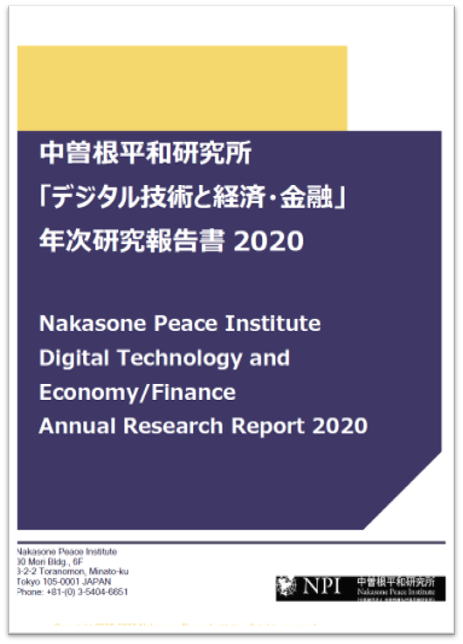2015/12/09
Kanji Amemiya, "Laws of Innovation and Strategies of Innovation"
[PDF version] (The article appeared originally in Japanese in IIPS Quarterly, dated July 17, 2015).
1. Are all corporate activities innovation?
Nearly all corporate activities fall under one of two descriptions. The first is "activities that create new products or services," and the other is "activities that refine and improve existing products or services." For instance, considering such cases as automobiles, refrigerators, televisions, and airplanes, initially developing and practically implementing these products is the former; improving or refining these products to improve their performance or functionality while updating or upgrading them is the latter. Creating new products--as in the former description--is an extremely difficult corporate activity. However, once a product has been developed and implemented, and once the economic effects of its widespread adoption are manifested in the market, the product's name is left to posterity as a "groundbreaking innovation."
Nevertheless, these products, which have all been implemented and used in ways that now seem perfectly ordinary, did not first appear before consumers as finished products. Even after they were commercialized and released in the market, repeated processes of minor refinements and improvements resulted in improvements in the products' performance and functionality, with the products thus penetrating the market and gradually becoming more practical to use. As a corporate activity, groundbreaking innovations do, indeed, tend to receive all the glory. However, the down-to-earth corporate activity of repeated refinements and improvements while a product is becoming widely used is still essential.
To what, then, does the word "innovation" refer: truly groundbreaking innovations, or refinements and improvements to existing products and services? Groundbreaking innovations are characterized by discontinuity, in that they are newly created. There are thus two schools of thinking: one that maintains, based on the notion that such innovations produce economic returns in the market, that only groundbreaking innovation is true innovation; and one that argues that, because minor refinements and improvements done as extensions of existing products and services also create economic value, refinements and improvements are included within the concept of innovation, alongside the groundbreaking form.
2. The school of thought that does not count refinements and improvements to existing products and services as innovation
Companies develop new products, services, and technologies, grow by allowing these developments to permeate society and become widespread, and thereby create a place for themselves in society. Without the corporate strength to continue to provide excellent products and services in the long term, a company cannot be a going concern. Groundbreaking innovation, whereby such products and technologies are created anew, affects whether a company succeeds and is what constitutes true innovation. Thus, the term "innovation" means, precisely, the production of something new or the production of something that already exists using a new method. Joseph Alois Schumpeter understood innovation as a force acting within the economic system and argued in this manner. (Schumpeter J. A. The Theory of Economic Development: An Inquiry into Profits, Capital, Credit, Interest, and the Business Cycle, Cambridge: Harvard University Press. 1934) Production here refers to the combination of various "materials and forces" capable of being exploited; an innovation combines materials and forces in a form that differs from those that came before--in other words, it is a "new combination."
Thus, the argument that groundbreaking innovations are the true innovations focuses on the creation of new products and technologies and, therefore, stresses two characteristics: "discontinuity," which characterizes the importance of innovations not being extensions of the past, and "creative destruction," by which new creations produced within companies as sources of change drive out existing products, services, and technologies.
Consider the Internet, for example: It was a technology that could not even have existed in the past. The Internet is a massive, distributed network that interconnects numerous smaller networks around the world. It became remarkably widespread because it created a variety of new services--including email; sharing and releasing of digital information; distribution of video, music, and other content; and online shopping--and thereby became an established part of people's lifestyles and produced countless online providers. Thus, the discontinuous changes that the Internet caused generated structural changes in companies, society, and the economy. At the same time, by functioning as a discontinuous innovation, the Internet both created new value and disrupted existing products, services, technologies, and so forth.
According to Schumpeter's view that innovation plays the central role as the driver of the economy's growth and development, creative destruction is the very essence of capitalism. The source that gives rise to innovation is, at its root, not changes in the external environment but creation internal to companies. To achieve sustained economic development, it is crucial to repeat the process of creative destruction by constantly producing new innovations. What is important is not looking for a short-term equilibrium but considering how to disrupt currently existing structures through creation.
3. The school of thought that counts refinements and improvements to existing products and services as innovation
Nathan Rosenberg argued that, in addition to groundbreaking innovations, refinements and improvements to existing products and services can also be considered part of the category of innovation, if one conceives of such refinements and improvements as each being small, incremental innovations. (Rosenberg, N. Inside the Black Box: Technology and Economics, Cambridge University Press 1983) Even after a groundbreaking innovation has occurred, continuous and gradual efforts that are extensions of what has come in the past--refinements and improvements--are still required before that innovation can permeate society and become widely used. Rosenberg, who expresses the concept of innovation as "the process by which firms master and get into practice product designs and manufacturing processes that are new to them," understands the idea broadly and argues that the role that such cumulative, gradual innovations play is crucial.
Excellent products, services, and technologies do not appear in the market in completed states from the start. To be sure, companies should release excellent products and services in their perfected states--that is, they should release them in the most complete state at that time. However, there is no such thing as a product that is entirely complete from the beginning. It is only after a company engages in ceaseless refinements and improvements that excellent products and services start to reach completeness. Perceived problems with products and services arise not just internally within companies but also among market actors such as consumers and competing firms. Because the problems that come to the fore from the market are entirely unanticipated by the company, they create more room for refinements and improvements, allowing products to develop and gradually become complete.
One example of this process is the iPad, which went on sale in April 2010. Initially, various media outlets bashed the iPad as a defective product that lacked essential features: no camera, no multitasking capabilities, no flashcard reader, no USB ports, and too many other defects to list. Apple proudly sent the iPad out into the market as a highly complete product, and yet the market reaction was chilly. Subsequently, Apple further developed the iPad through the aggregation of various refinements and improvements. With the release of the iPad 2, Apple raised the device's level of completeness as a highly versatile tablet by adding one camera to the front and another to the back, and making it one of the first to deliver multitasking in the tablet market with the development of iOS 4.2.1. Thus, Apple resolutely accomplished gradual innovations--refinements and improvements--developing the iPad into a highly complete product. When one considers the robust numbers of iPad units that Apple later sold, it is clear that continuous innovation, in which next-generation products improved on the flaws of their predecessors, created value on the demand side, and had economic effects on the market, promoting the adoption of the iPad.
Because such gradual and continuous innovation involves refinements and improvements that are extensions of what already exists and represents the accumulation of numerous small innovations, it is called "incremental innovation" or "sustaining innovation."
4. The relationship between discontinuous innovation and continuous innovation through refinements and improvements is a trade-off
As described above, discontinuous innovation is the type of innovation that gives rise to new and groundbreaking products, services, and technologies. By contrast, continuous innovation is the type of innovation by which companies attempt to make refinements and improvements to already developed products, services, and technologies. One might, then, wonder about the relationship between these two types of innovation. This question can be answered by considering whether it is possible to generate discontinuous and continuous innovations at the same time.
Because, by definition, discontinuous innovations are characterized by discontinuity, they arise anew through the abandonment of the past. In other words, this type of innovation is the act of casting aside the concepts that underlie existing products, services, and technologies, and creating something new. Existing knowledge and experience are not required; rather, they would be burdensome. Ideas and insights that give rise to new things are crucial, and it is also crucial not to be bound by existing concepts. However, if one concentrates on continuous innovation, then one loses the ideas and insights that discontinuous innovation requires. This is because, when one is engaged in continuous innovation, one accumulates knowledge and experience through repetitions of the process of gradually and continuously refining and improving and, therefore, one tends only to attempt to understand things on existing dimensions. Because the knowledge and experience accumulated while engaging in continuous innovation interfere with the ideas and insights necessary to make discontinuous innovations, it follows that it is extremely difficult to create discontinuous innovations while engaged in continuous innovation.
An example of this is Sony's television business. Sony had developed cathode-ray tube (CRT) television sets from early in its existence and continued to push forward with refinements and improvements to CRT technology from a leading position in the television set market. Because of this, Sony was late in starting development of flat panel television products, and, when the era of the flat screen TV arrived, Sony's television business suffered, and the company lost its position as a leader. The turning point for Sony was the development of the Super-Flat Trinitron picture tube. With this development, Sony succeeded in creating a completely flat screen, something previously thought impossible to achieve with CRT technology. With the success of the WEGA television sets that inherited this technology, Sony came to cling tighter and tighter to CRT technology. Because Sony continued to develop its television set business along the existing technological dimension of cathode-ray tubes, it postponed the development of new technologies, to the point that its BRAVIA television sets, which were equipped with liquid-crystal panel displays, went on sale five years after Sharp's similar offering, the AQUOS. Even after the creation of the BRAVIA brand, Sony continued to devote itself to refining and improving the CRT technology used in the WEGA brand, unable to make the decision to end production of CRT television sets until demand in the market for them declined significantly. Sony's television set business thus demonstrates the difficulty of creating discontinuous innovations while engaging in continuous innovation.





